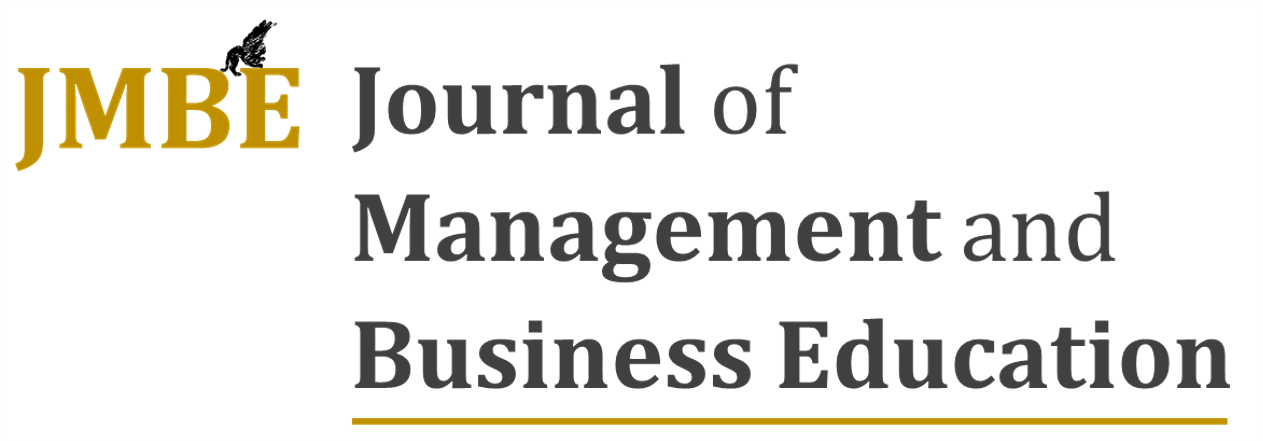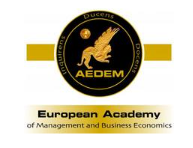Teaching organizational structure through the case method
DOI:
https://doi.org/10.35564/jmbe.2022.0018Keywords:
case method, active learning, organizational structure, behavior, business administrationAbstract
Teaching at university level has evolved in recent years towards teaching methodologies in which the student has an increasingly active role in their learning, being the protagonist together with the teaching staff. The use of techniques in which students put into practice and reflect on the theoretical contents has benefits both for the acquisition of knowledge and for the development of competences. In the field of business administration, business reality is a continuous source of information for putting this type of methodology into practice. Therefore, the objective of this paper is to achieve, through the case method, that the students of the subject " Organizational Structure and Behavior" of the degree in Business Administration and Management assimilate, understand and put into practice the concepts acquired in the theoretical classes, favoring autonomous learning, cooperative learning, dialogue and peer learning. Specifically, lectures have been replaced by a set of individual and group activities around a business case study designed by the teaching staff. The use of the case method has been adequate to achieve the objectives set at the beginning of the activity. Students have expressed a high satisfaction with the learning process, a higher perceived quality of learning, and increase of digital competences and an improvement of the evaluation processes. In addition, this methodology has increased their interest in the subject and its contents and has improved their autonomy in the learning process.
Downloads
References
Almahameed, A. AlShwayat, D. Arias-Oliva, M. & Pelegrín-Borondo, J. (2020). “Robots in education: a Jordanian university case study”. Journal of Management and Business Education, 3(2), 164-180. https://doi.org/10.35564/jmbe.2020.0011
Andreu, M.A., González, J.A., Labrador, M.J., Quintanilla, I., & Ruiz, T. (2004). “Método del caso. Ficha descriptiva y de necesidades”. Universidad Politécnica de Valencia. Grupo metodologías activas (GIMA-UPV). Retrieved from: http://www.upv.es/nume/descargas/fichamdc.pdf
Bruner, J. (1960). The process of education. Cambridge, MA: Harvard University Press.
Caro, A.R., & Castellanos, G.M (2019). “Incidencia de los OVA en un entorno educativo virtual y presencial”. V Congreso Internacional de Investigación y Pedagogía, Universidad Pedagógica y Tecnológica de Colombia (Uptc). https://doi.org/10.18041/entramado.2015v11n1.21101
Contreras, J. (1990). Enseñanza, curriculum y profesorado. Introducción crítica a la didáctica. Ed. AKAL.
Cruz-Suarez, A.; Martínez-Navalón, J.A.; Gelashvili, V.; & Herrera-Enríquez, G. (2022). “Creativity and innovation in technology and operations management through brainstorming”. Journal of Management and Business Education, 5(1), 63-75. https://doi.org/10.35564/jmbe.2022.0005
Mayer, R.E. (1992). Thinking, problem solving, cognition. Ed. WH Freeman/Times Books/Henry Holt & Co.
Ramsden, P. (2003). Learning to teach in Higher Education. Ed. Routledge.
Zabalza, M. (1991). Diseño y desarrollo curricular. Ed. Narcea.
Downloads
Published
How to Cite
Issue
Section
License
Copyright (c) 2023 Journal of Management and Business Education

This work is licensed under a Creative Commons Attribution-NonCommercial-ShareAlike 4.0 International License.
License terms at: https://creativecommons.org/licenses/by-nc/4.0/legalcode




